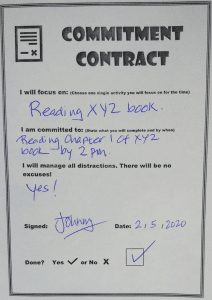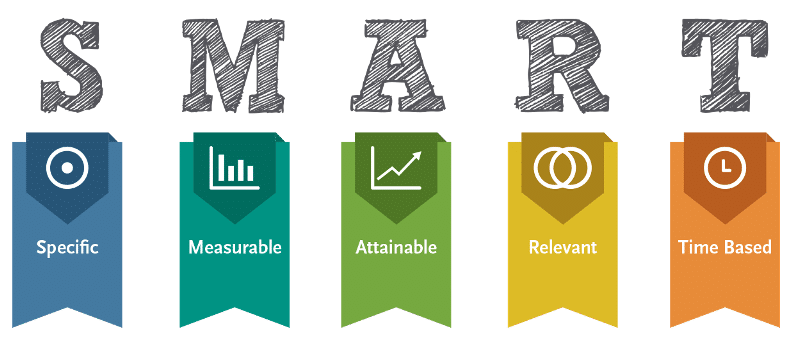Surely the only parents who have kids like this have been blessed with a miracle, are paying them to perform or have some kind of superior power you can only dream about.
In other words, not you. You’re still searching for any kind of magic to do the trick.
Until then, you’ve resigned yourself to the fact that you’ll have to continue nagging, blackmailing, or begging your kids to do their work.
Oh, the torment, and for how much longer?
Or do you?
What if there was another way?
We believe there is.
Imagine transferring the responsibility for getting your children’s work done from yourself, directly to them.
Interested to know how?
Of course, we can’t guarantee it will work for you and your children, but it has for countless others so isn’t it worth a shot?
In short, we’re talking about you teaching them how to use an incredibly simple self-management tool which works.
You may even want to try it yourself.
To make it even easier for you, we’re giving you a downloadable template which you can print and start using straight away.
So how does it work?
The tool is part of a bigger strategy which includes knowing how to set goals which we’ll cover first, briefly.
But just to let you know, that although the tool works wonders with helping to achieve goals, it works just as well as a stand-alone tool.
Set SMART Goals
Your children may already be familiar with setting goals, especially if they’re older. If not, we suggest you show them how to do this too.
Knowing how to set goals is not only important for their education, it’s a vital life skill.
We favour the SMART goal concept. The idea is that every goal satisfies five criteria as set out below.
Specific – The goal must be clearly identified and understood.
Example Goal: “I will read XYZ book within 7 days.”
Measurable – The goal must be possible to measure so you or anybody else can verify that it’s been achieved or not.
In this case the goal is measurable. Either the book has been read or not.
Attainable – Is the goal realistic? In other words, is it doable?
The example goal will be attainable if it’s reasonable and realistic that the book can be read in the time specified. Let’s assume it is.
Relevant – Is the goal in alignment with what you desire and/or need to move forward towards something you want?
Let’s assume the book needs to be read for school, so it is relevant.
Time-Based – The goal must have a deadline.
The example goal must be completed within 7 days, so it is time based.

CHECK: Our goal meets all the SMART criteria.
Goals usually state a specific intention we want to achieve but there’s a big problem with goals.
They don’t achieve themselves. Have you also noticed that?
Firstly, remember that written goals have a much higher chance of being achieved, so make sure that goals are always noted down somewhere.
Next the goal has to be unpacked into actionable daily chunks.
If the XYZ book consists of 7 chapters, then you might decide that your daily goal is to read one chapter a day for 7 days.
Now schedule when you’ll do it. Let’s say every day at 2 PM.
This still does not mean that you will actually do it which is usually why the nagging schoolteacher, parent, or boss (in the case of yourself) has to step in.
But we’re trying to move away for this, remember?
Enter the amazingly simple but effective self-management tool called, “The Commitment Contract.”
The Commitment Contract
The Commitment Contract is a simple tool that can help anybody manage themselves to success.
It’s an agreement that you, your kid or anybody has with themselves, to do whatever it takes to get the job done.
When showing your children how this works, spend some time talking about the concept of ‘contracts’ as well as why they’re used in real life.
Here’s how the tool works:
Have a copy of the printed tool available. We’ve included two different sized versions you can download.
Now complete the contract as per the example below:
 I will focus on: “Reading XYZ Book”
I will focus on: “Reading XYZ Book”
They must choose one single activity to focus on for the time period.
Make sure you also have a chat about what it means to focus on something.
They should understand that they must do only one thing during this time; whatever they have written down.
I am committed to: “Reading Chapter 1 of XYZ book by 2 PM”
Here they state exactly what they’re going to complete and by when.
Again, have a chat about what it means to commit to something.
They should understand that the concept of commitment does not entertain compromises or excuses.
They are either committed to doing what they say they will do, or they aren’t. They must be as sure as they can be about their commitment.
One of the biggest barriers to completing any task for all of us is the excuse of distractions.
“I couldn’t do it because someone sent me a message on WhatsApp.”
It’s necessary that they can identify distractions like mobile phones, social media, other people etc. and that they can either eliminate or manage these. No distraction is a legitimate excuse.
Finally, they sign and date the contract since this is what makes any contract binding.
It’s best they keep the contract in sight while they’re doing the activity.
At the end they’ll assess whether they achieved the commitment or not and mark the box with a tick or a cross. No excuses. It’s very black and white.
If they didn’t achieve the commitment outcome for whatever reason, have a chat about why they didn’t and what they will change the next time to be more successful.
It’s vital children understand that they did not fail, they simply didn’t achieve the commitment this time.
Understanding why they were unsuccessful will hopefully help them to make the necessary changes for their next attempt.
Also be sure to reward your child when they are successful. A simple hug, high five, or pat on the back can make a huge difference.
Verbal praise is also encouraged such as saying things like “Great work”, and “Well done, I’m proud of you.”
Although a successful commitment contract is in itself a reward, special activities, games, and other enjoyable tasks can be used to reward your child’s hard work in exchange for successful commitment contracts.
For example, you and your child can decide and negotiate how many successful commitment contracts are required to be exchanged for time with their PlayStation later.
The Commitment Contract is a way for children to continually experience small successes. Each one of these builds to strengthen their self-confidence and self-esteem.
When they self-manage required actions in this way, they also achieve their goals without you having to play chief motivator and stick holder.
Ultimately when children feel more in control of what they’re doing, they feel independent, safe, and happy. That means you as the parent can step aside and observe them thrive.

